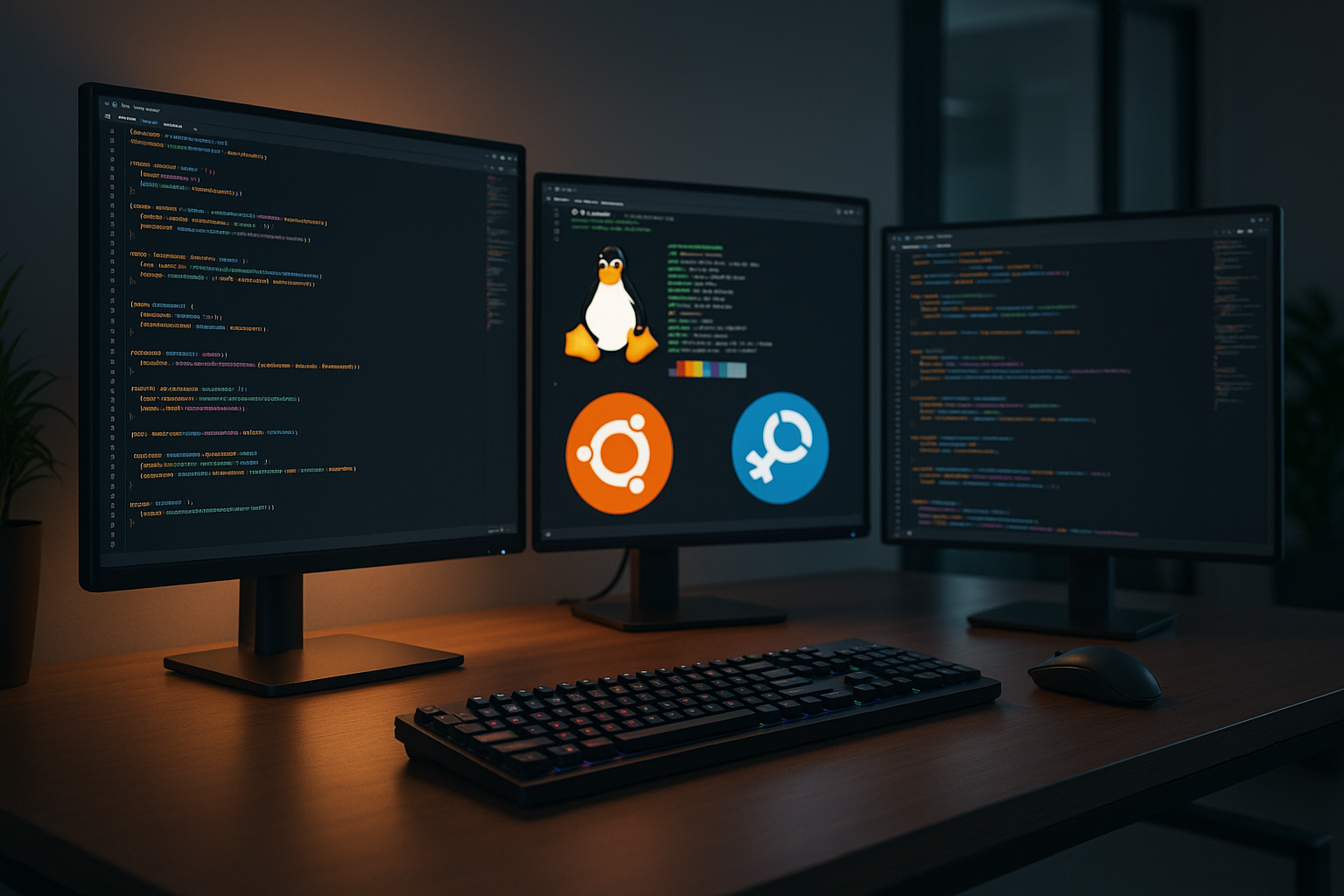Linux is one of the most popular platform for developers in the world for its security, ecosystem and flexibility. As in 2025, there are many Linux distribution available on the internet. Choosing the right one can significantly impact productivity, stability, and access to the latest software. Today, I will guide you to find out the best distros of Linux for developers highlighting their features & ideal usages.
1.Ubuntu: The All-Rounder
Ubuntu is one the most popular Linux distribution for developers of all kinds. Based on Debian, Ubuntu packs with user-friendly features, making it an excellent choice for beginners and experts alike. it’s Long-Term Support (LTS) versions offer up to five years of security updates making it secure from all possible threats on internet.
Ubuntu is ideal for developers because it offers most of the modern programming languages, IDEs and libraries available Snap packages simplifies software installation and maintenance. Ubuntu allows seamless installation of developer tools like Visual Studio Code, Android Studio, and IntelliJ IDEA using a command-line tool,
Many open-source projects like Android Open Source Project (AOSP) relies on Ubuntu as their build environment. Its strong community support and compatibility with cloud platforms such as AWS and Azure make Ubuntu essential for web, mobile, and cloud developers.
2. Fedora: Cutting-Edge with a Developer Focus
Fedora is renowned for implementing the latest open-source technologies, making it a favorite among developers who want access to up-to-date software. Fedora can be used as testing OS before entering into enterprise Linux releases like RHEL and CentOS.
Fedora Workstation edition comes with GNOME desktop. It also includes tools for containerization, virtualization, and programming languages like Rust, Go, and Python. Its developer portal provides guides for desktop, web, and hardware related development, including Arduino programming.
Fedora frequent update ensures developers get new libraries, compilers, and IDEs regularly. Its security features and support for SELinux (Security-Enhanced Linux) provide a layer of protection for development work.
3. Manjaro: Arch-Based, User-Friendly Power
For developers who want the power and customization of Arch Linux but with easier installation and maintenance, Manjaro is an excellent choice. It offers multiple desktop environments which helps developers to tailor their workspace.
It grants access to the Arch User Repository (AUR) which provides a large collection of software packages. Manjaro also have most hardware compatibility and driver installation.
Manjaro’s regular update ensures developers receive continual updates without reinstalling the OS, keeping libraries and tools current, which is critical for cutting-edge development workflows.
4. openSUSE: Stability and Flexibility
openSUSE has two variants: Leap (stable release) and Tumbleweed (rolling release). It helps a developer who needs stable platform or latest software. openSUSE’s YaST configuration tool provides an easy setup and management system. It’s suited for developers and system administrators who are focused on stability with modern tooling.
5. Lightweight and Specialized Distros
- Puppy Linux: It is extremely lightweight and fast. It runs well in older hardware. It includes development tools via SquashFS packages and is great for coding on minimal systems.
- MocaccinoOS: It is based on Gentoo. MocaccinoOS is best for those developers who want customizable, bloat free operating system with advanced package management.
In 2025, Linux is one of the popular Operating System for development purposes. Choosing highly stable LTS distros like Ubuntu for reliability or source based distribution for latest software is the ultimate challenge for a developer. The choice must be taken on the basis of specific development needs like programming languages, hardware compatibility,and workflow preferences such as AI, cloud, or embedded systems.
